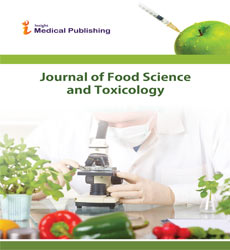In Morocco: HACCP between food quality assurance and occupational risk management
Abstract
In Morocco, a significant rise in cases of food poisoning has recently been recorded. During 2015, the Center Anti poison et de Pharmacovigilance du Maroc (CAPM) identified 2,887 cases of foodborne illnesses [MOA], of which 60.8% are cases of collective poisoning. This problem has become worrisome, which has forced the agrifood industries to adopt self-control systems that allow safe food production and therefore consumer health security. Indeed, the HACCP system (Hazard Analysis Critical Control Point), which is an organized method of improving quality in the food sector, allows the control of microbiological, chemical and physical hazards. This approach has been described as the most credible means for the protection of foodborne illness. As a result, an improvement in the number of agrifood industries approved HACCP by the National Office for Food Sanitation (ONSSA) has been noted. These are, for example, 148 dairy industries in addition to 41 milk collection centers which are authorized by this body in 2019, as well as the number of meat industries and its derivatives approved HACCP arrived at 347 in the same year. However, the practical implementation of Hazard Analysis and Critical Control Points (HACCP) and especially the definition of critical points (CCPs) in the food industry is usually a complicated and difficult job, especially for small and small businesses medium-sized enterprises (SMEs). However, this HACCP quality assurance approach for the management of food health risks has also been adapted for the management of occupational risks linked to the operator, in particular the chemical risk in a context of integrated risk management, thanks to the HACCP method. - OPERA developed by our team. This is a chemical risk analysis in a quality control laboratory in a Sugar Factory in Morocco and another analysis based on the assessment of the chemical risk associated with the use of hand sanitizers in three dairy industries in Morocco during the COVID-19 pandemic. This new approach allows for increased productivity, adaptation, improvement of resources and reduction of the risk of conflicts in the conduct of the business.
Open Access Journals
- Aquaculture & Veterinary Science
- Chemistry & Chemical Sciences
- Clinical Sciences
- Engineering
- General Science
- Genetics & Molecular Biology
- Health Care & Nursing
- Immunology & Microbiology
- Materials Science
- Mathematics & Physics
- Medical Sciences
- Neurology & Psychiatry
- Oncology & Cancer Science
- Pharmaceutical Sciences
